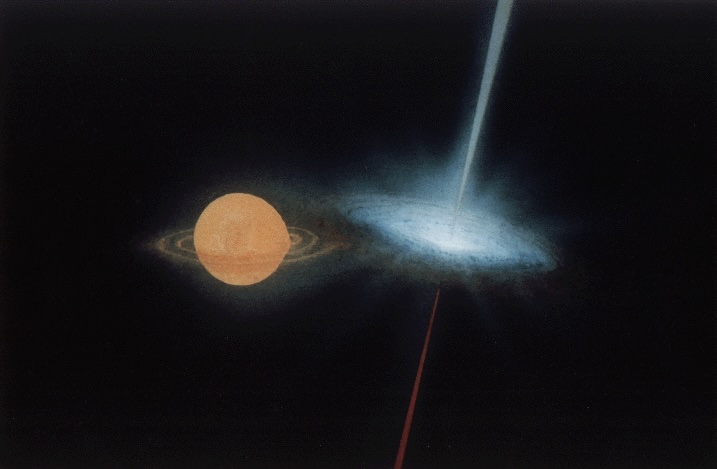What differentiates Quasars from Microquasars?
Quasars are indeed intriguing celestial bodies; massive black holes that actively consume material from their accretion disks. This consumption leads to the creation of a jet that can outshine the entire galaxy when combined! Additionally, there are smaller black holes that form as a result of star deaths, which also exhibit accretion disks and jets similar to their larger counterparts. These smaller versions are known as microquasars, and while they share similarities with quasars, there are also notable differences between them.

The term ‘quasar’ itself provides insight into their characteristics, as it is a shortened form of ‘quasi-stellar radio source’, accurately describing their nature as a source of radio energy that appears star-like. The first quasar discovered was named ‘3C 273’ and was located in the Virgo constellation. Typically, objects of this kind are identified by catalogue numbers rather than common names, with ‘3C 273’ indicating its position as the 273rd object in the 3rd Cambridge Catalogue of Radio Sources.
It was in 1964 that we began to comprehend the essence of quasars and their remarkable luminosity, stemming from the material accretion onto supermassive black holes. This accretion process generates twin radio lobes that manifest as opposing jets perpendicular to their rotational axis. Microquasars, on the other hand, appear to be miniature versions of quasars.
In a recent publication by J I Katz from Washington University, the examination of the disparities between quasars and microquasars has been conducted. Despite the widespread occurrence of quasars throughout the universe, only 19 microquasars have been identified thus far, revealing a significant distinction.
The pivotal factor appears to be the radio lobes. In quasars, a substantial portion of their power stems from the acceleration of particles along their polar jets, resulting in the release of energy from the radio lobes. Conversely, in microquasars, thermal emissions from their accretion disk take precedence. Interestingly, in quasars, the accretion of material onto supermassive black holes drives particle acceleration along the jet, rather than thermal radiation, for reasons that remain unknown. However, this phenomenon does not apply to smaller microquasars.
Supermassive black holes, which serve as the driving force behind quasars, offer a more conducive environment for the accretion and acceleration of energetic particles. Katz suggests that the lower electron density in the accretion disk of supermassive black holes enables quasars to accelerate significantly larger quantities of relativistic particles compared to their stellar mass counterparts.
Do not forget to share your opinion with us to provide you with the best posts !



0 Comments